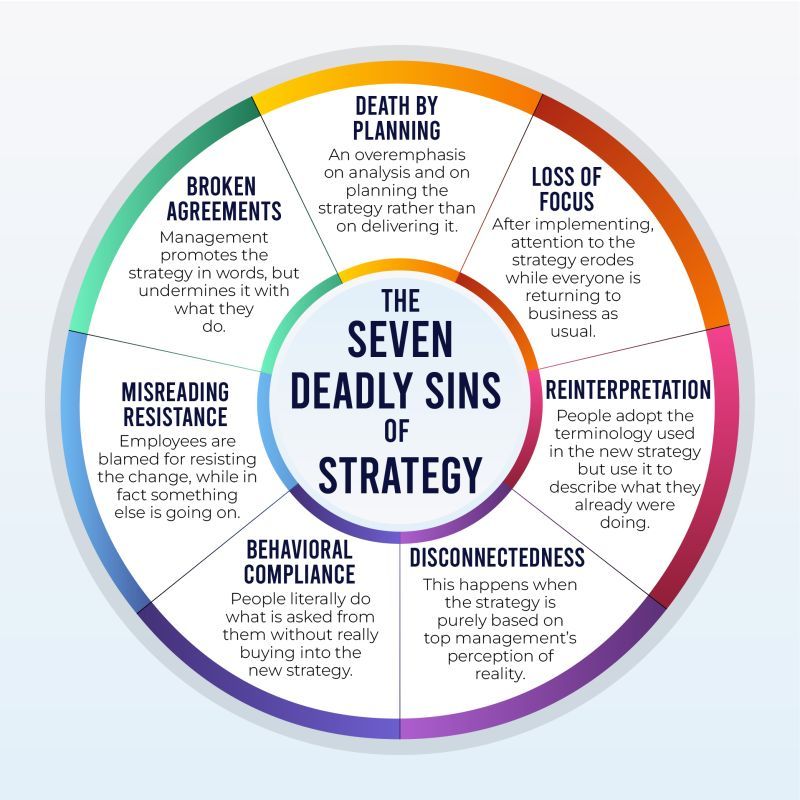Lack of clear goals: A strategy must have clear and measurable goals. Without them, it is impossible to determine whether or not the strategy is successful.
Lack of focus: A good strategy must focus on a specific goal or objective. A strategy that tries to accomplish too many things at once is bound to fail.
Poor implementation: Even the best strategy will fail if it is not implemented properly. Implementation requires careful planning, resource allocation, and execution.
Ignoring market realities: A strategy must take into account the realities of the market. Failure to do so can result in a strategy that is out of touch with the needs of customers and the competitive landscape.
Failure to adapt: A strategy must be flexible enough to adapt to changing market conditions and new challenges. A strategy that is rigid and inflexible is doomed to fail.
Lack of resources: A strategy that does not have the necessary resources to succeed is bound to fail. Resources include money, people, technology, and infrastructure.
Lack of leadership: Finally, a strategy must have strong leadership to guide its implementation. A lack of leadership can result in confusion, infighting, and a failure to execute the strategy effectively.
Anything to add?
Figure by Jeroen Kraaijenbrink
The list of 7 ‘main failings’ as they were called is from Johnson, Scholes & Whittington, 2011, Exploring Strategy, pg 489-491
